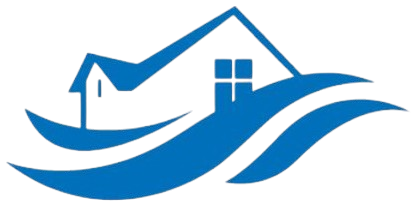Drywall Water Damage Restoration in Riverton, Utah
Possible Causes of Drywall Water Damage
Water damage to drywall in homes and businesses can occur due to a variety of reasons in Riverton. Common causes include pipe leaks, which often happen unnoticed until significant damage occurs. Plumbing issues such as faulty fixtures or burst pipes can release large amounts of water into walls, weakening the drywall and causing warping or mold growth.
Another frequent cause is roof leaks that allow rainwater to seep into the walls during storms. Poorly sealed windows and door frames can also contribute by letting moisture penetrate the wall cavities. Additionally, appliances like dishwashers and washing machines might leak, especially if hoses or connections are in disrepair, leading to drywall saturation and deterioration over time.
How Can We Fix That?
Our team of water damage restoration experts begins by performing a thorough assessment to identify the full extent of the drywall damage. Using advanced moisture detection tools, we locate areas where water has penetrated beyond the surface, ensuring no hidden issues are overlooked.
Once we understand the scope of the damage, we carefully remove and replace the affected drywall sections. Our specialists ensure proper drying using industrial-grade equipment to eliminate residual moisture, preventing mold growth and further deterioration. We apply professional-grade primers and sealants to restore the wall surfaces, ready for painting or finishing.
Throughout the process, we prioritize efficient and minimally invasive procedures to restore your space quickly. We also offer preventative advice to help you avoid future water intrusion issues, such as sealing potential leak points and upgrading plumbing components. Our goal is to restore your drywall to its original condition with long-lasting results that protect your property.
Why Are We the Best in That Case?
Our team has extensive experience in drywall water damage restoration within Riverton, backed by a commitment to quality and customer satisfaction. We understand local weather patterns and common plumbing issues, enabling us to tackle even the most challenging drywall repairs efficiently.
We use state-of-the-art equipment and environmentally friendly solutions to ensure thorough drying and mold prevention, giving you peace of mind. Our specialists are trained to handle delicate repairs with precision, ensuring that your walls look as good as new once the job is complete.
Customer care is at the core of everything we do. From your first call to final inspection, our experts communicate clearly, providing transparent estimates and timelines. We’re dedicated to delivering fast, reliable service because we know how disruptive drywall water damage can be to your daily life. Call us today at (888) 884-7150 for expert drywall water damage restoration you can trust.
Frequently Asked Questions
How long does drywall water damage restoration take?
The duration varies depending on the extent of the damage, but typically, the process can take from a few hours to a few days. Our team works efficiently to minimize disruption and restore your walls swiftly.
Will I need to repaint the walls after restoration?
In most cases, yes. We aim for a seamless repair, but painting or finishing might be necessary to match your existing decor. We can recommend trusted local painters if needed.
How can I prevent drywall water damage in the future?
Regular maintenance of plumbing, prompt repairs of leaks, and ensuring proper roof and window sealing are vital. Additionally, installing a sump pump or dehumidifiers in high-moisture areas can help reduce the risk.
Is mold a concern after drywall water damage?
Yes, mold is a common issue if water isn’t dried promptly. Our experts take extra care to thoroughly dry and treat affected areas, preventing mold growth and ensuring a healthy indoor environment.
What should I do immediately after discovering drywall water damage?
Contact our specialists at (888) 884-7150 for rapid assessment and professional removal. Avoid trying to repair or dry the area yourself, as improper handling can worsen the damage or cause mold problems.
